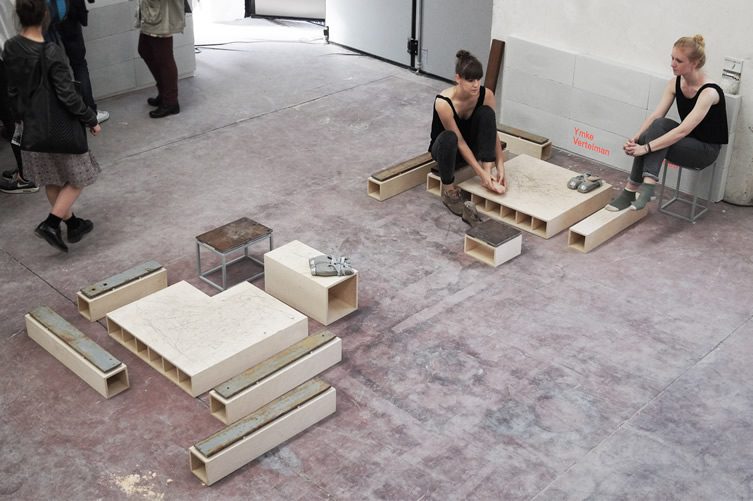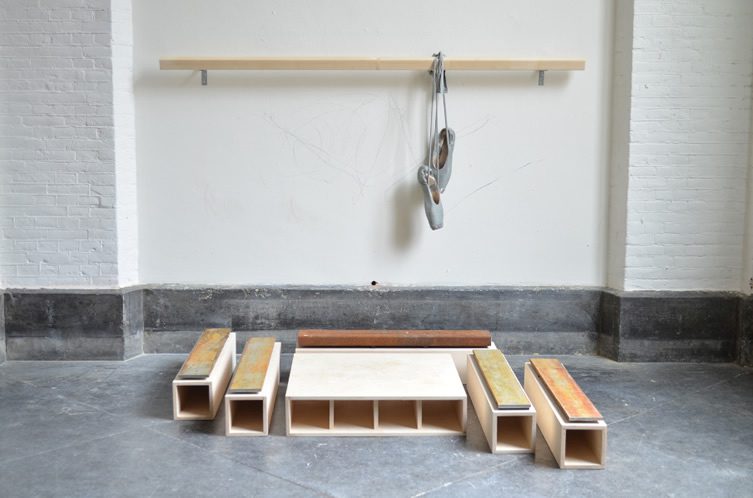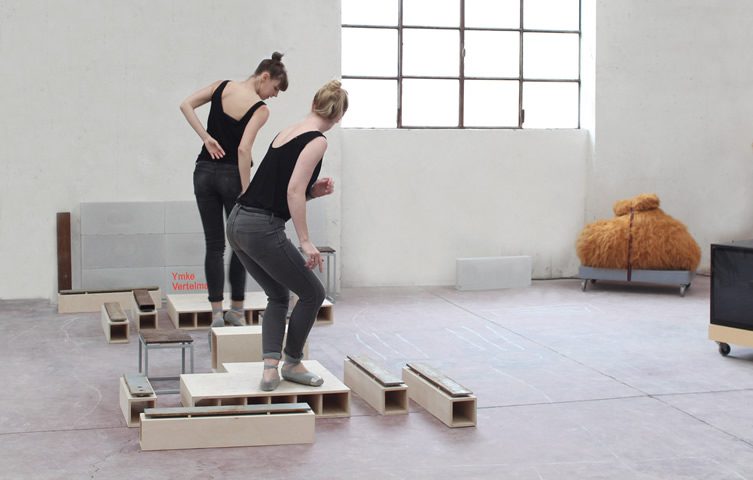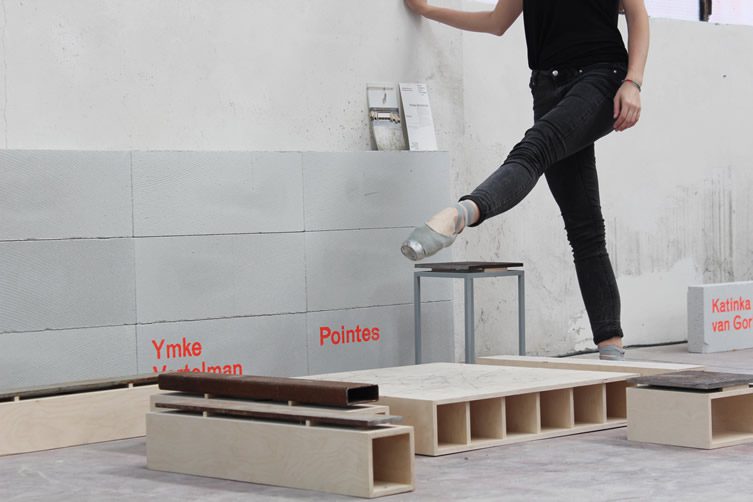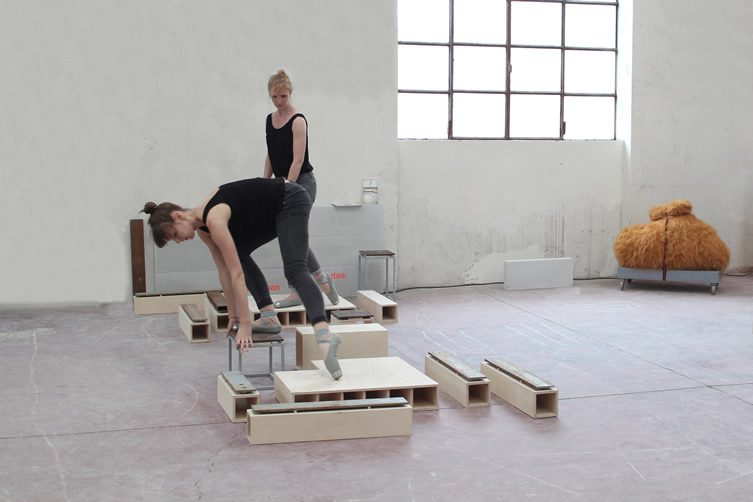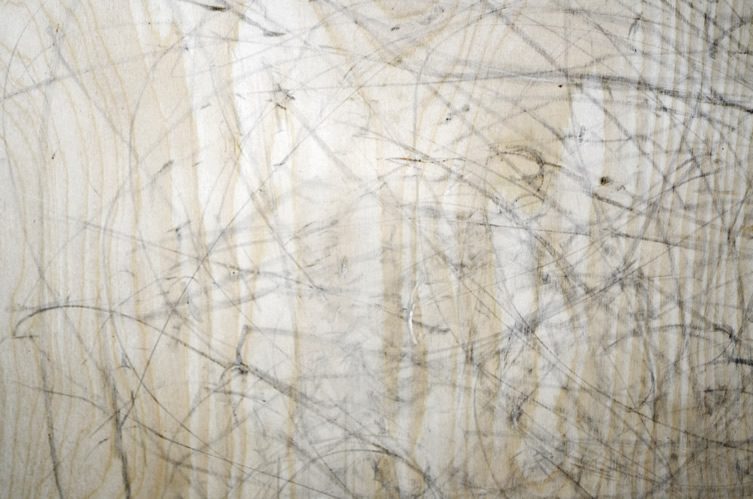There are a number of types of dance, tap for example, that rely on the feet not only making aesthetically pleasing shapes but also perfectly controlled sounds. A good tap dancer uses himself as a musical instrument, creating syncopated rhythms and percussive phrases that respond and build on the accompanying music, often creating a pattern of call and response. Ballet is not one of these dances. Its practitioners aim to float around the stage seemingly weightless, moving with great strength, grace and poise. But, try as they might, the dance is never quite silent. If you listen carefully during a ballet, you’ll often catch the dampened thud of the wooden block located inside a dancers pointe shoes hitting the ground, a sonic by-product that reminds us that not even these elfin figures can escape gravity.
It was this often overlooked noise, that led Dutch interior architect and furniture design student Ymke Vertelman to start experimenting with what ballet could sound like if it made more effort to be heard. Creating an instrument made from different shapes and sizes of blocks, she constructed steel-capped pointe shoes to play them with, creating different notes depending on what is hit and how – much like a human xylophone. The result, which she showcased with dancers Maria Udod and Anne Kistemakerat at last month’s Salone del Mobile in Milan, fuses dance, percussion and design to create an engaging experimental performance.
